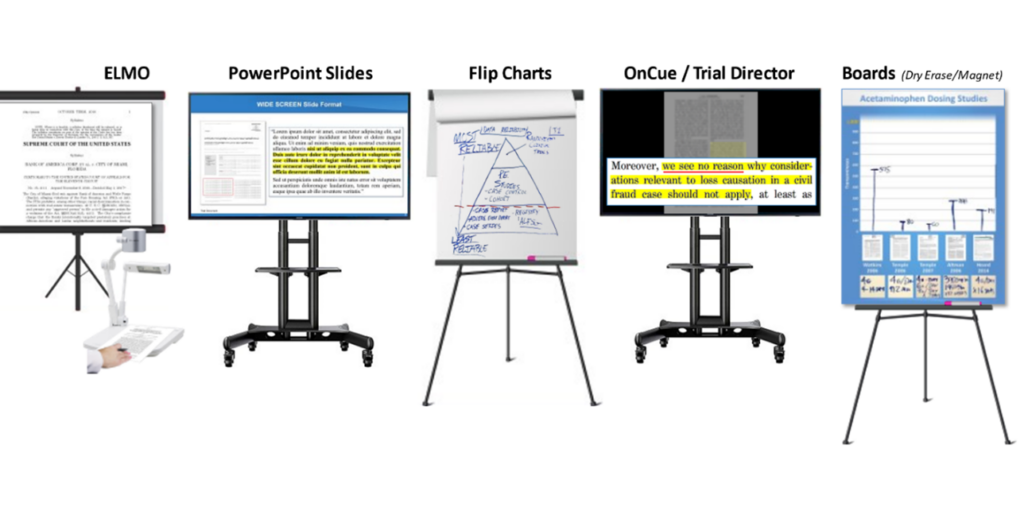Exactly How Test Presentations Enhance Your Disagreement and Convince Jurors
Trial presentations work as a pivotal device for enhancing legal disagreements and convincing jurors. By integrating visual help, narrative structures, and emotional involvement, lawyers can produce a compelling situation that reverberates on multiple levels. The tactical usage of visuals not only clarifies complex info yet also captures jurors' focus more successfully than words alone. The art of storytelling plays a similarly important duty in changing valid evidence into a compelling story, forming jurors' assumptions. Understanding these elements can considerably impact trial outcomes, raising the question of how each component contributes to this intricate dynamic.

Value of Aesthetic Help
Visual aids play a crucial role in enhancing the efficiency of trial presentations, as they can dramatically boost audience involvement and retention of information. In the context of a test, where jurors are charged with handling facility details, aesthetic help offer to streamline and make clear bottom lines. Charts, charts, and photos can share information and principles that might otherwise overwhelm or puzzle jurors, permitting a more uncomplicated understanding of the proof offered.
In addition, visual aids aid in preserving juror focus throughout the procedures. By damaging the monotony of spoken testimony, these tools can stress important arguments, making them extra memorable. Reliable visual help can also stimulate emotional actions, which can be pivotal in encouraging jurors to align with the speaker's narrative.

Crafting Engaging Narratives
An engaging story is crucial in test presentations, as it acts as the foundation of effective persuasion. It permits attorneys to weave with each other facts, evidence, and psychological aspects into a systematic story that reverberates with jurors. This narrative structure makes it possible for jurors to comprehend the intricacies of the case while leading them with the attorney's disagreement.
To craft a compelling story, lawyers need to focus on quality and coherence. This includes developing a clear protagonist-- commonly the customer-- and describing their journey through the events in inquiry. Providing image source the realities in a rational series enhances comprehension and keeps interaction. In addition, using vibrant summaries can create psychological photos that help jurors picture the occasions, making the narrative much more remarkable.
Moreover, incorporating vital themes throughout the presentation reinforces the core message and help in retention - trial presentations. The story should not only communicate info yet likewise stimulate a sense of justice, highlighting the risks included. Eventually, a well-constructed narrative cultivates a link between the jurors and the situation, placing the attorney's debate as both click here for more info reputable and compelling, therefore enhancing the likelihood of a desirable verdict

Engaging the Jury Mentally
Reliable court interaction hinges on the lawyer's ability to attach with jurors on an emotional level. This link can considerably influence jurors' understandings and their utmost decision-making.
Visual help, such as photographs or videos, can additionally boost emotional interaction, giving jurors with vivid depictions of the case's human elements. Crafting a story that highlights the battles and accomplishments of the individuals entailed guarantees that jurors see past the lawful arguments and recognize the human repercussions of their choices.
An attorney's passionate delivery can reverberate with jurors, strengthening their emotional investment in the case. It's important to balance psychological allures with accurate evidence, making sure that jurors really feel obliged to act while remaining grounded in the truth.
Structuring Your Presentation

The body of the discussion should be logically fractional into essential factors, each supported by engaging proof. It is advantageous to use narration techniques to weave realities into a story that jurors can quickly comply with. Aesthetic help, such as charts and video clips, can enhance understanding and involvement, assisting to highlight crucial items of evidence.
Real-World Instance Research Studies
Examining real-world situation researches provides vital understandings into the art of trial presentations and persuasion. The protection group effectively utilized a technique that integrated top-level specialist testimonies with multimedia presentations, which captivated jurors and eventually affected their choice.
An additional notable example is the "McDonald's Coffee Case," where the plaintiff's attorneys used graphic pictures of the injuries endured by Stella Liebeck. trial presentations. This raw aesthetic proof played an important function in communicating the extent of her burns, leading to a significant jury award. Such cases demonstrate that impactful trial discussions frequently rest on the effective combination of visuals and storytelling to evoke emotional reactions from jurors
Moreover, the "Casey Anthony Test" highlighted the value of narrative comprehensibility and credibility. The prosecution's read the article failure to establish a compelling timeline diminished their persuasive power, highlighting the requirement of a well-structured presentation. Assessing these cases reveals that successful test presentations require tactical planning, emotional involvement, and the capacity to resonate with jurors' values and ideas.
Verdict
Test presentations dramatically enhance debates and persuade jurors via the tactical use of aesthetic aids, engaging stories, and psychological involvement. A well-structured presentation equilibriums emotional allures with factual evidence, inevitably resonating with jurors' worths.